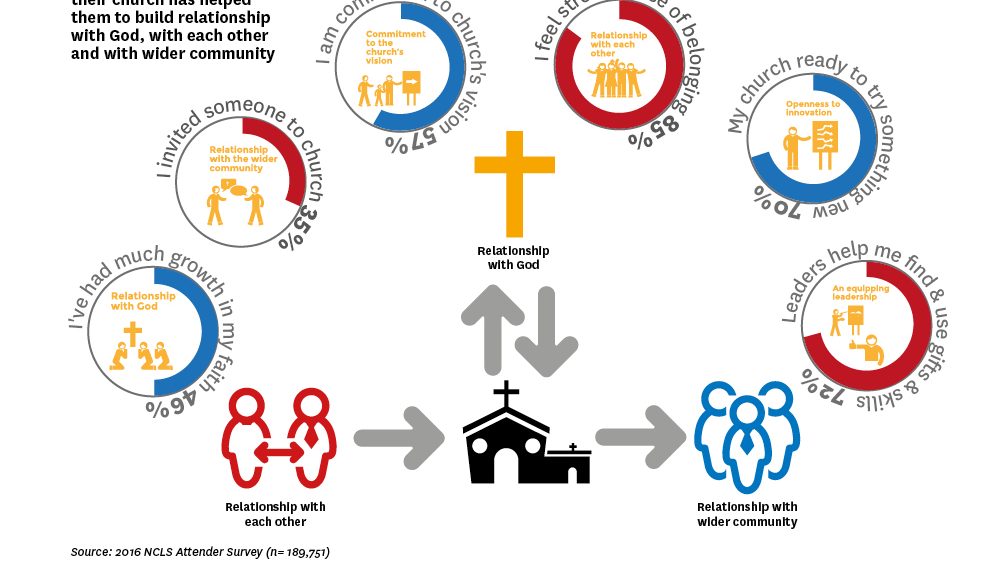Christians understand themselves to be called into a relationship with God, with others in the church and with the wider community. This “three-cornered” relationship underpins the thinking behind the measures of church vitality.
A spiritual awakening, a timely sermon, an experience of God’s presence in the church community, a helping hand in time of need – such experiences are signs of life in a church.
The National Church Life Survey gains insights into the attitudes, experiences and behaviour of a church’s people. This approach recognises and affirms that the life of a church can be seen in the stories of its people, the way in which they have been touched by God and by the activity of others in their lives.
The resource identifies nine Core Qualities that together build a picture of vitality in local churches.
The resource developed for churches, called the Church Life Profile, identifies nine Core Qualities that together build a picture of vitality in local churches. Ideally, we are looking for a balance across the various qualities.
Nine Core Qualities of church life
- Alive and growing faith
- Vital and nurturing worship
- Strong and growing belonging
- Clear and owned vision
- Inspiring and empowering leadership
- Imaginative and flexible innovation
- Practical and diverse service
- Willing and effective faith-sharing
- Intentional and welcoming inclusion
The first and greatest command is to love God with all of our strength (Matt 22:37). Church attenders seek to worship God and to be transformed through their relationship with God. This dynamic aspect of the Christian faith is reflected in the faith and worship Core Qualities.
Faith in God also involves joining with others who are on the same journey of faith. “If we walk in the light … we have fellowship with one another” (1 John 1:5-7). Relationships within the church, the degree of belonging that attenders feel, and frequency of attendance at church are covered by the belonging Core Quality.
The need for effective church leadership reflects a biblical pattern as well as a broader sociological reality. Leadership can provide both stability in a church and be a catalyst for change. How the leadership and their endeavours are viewed by church attenders is covered in the leadership, vision and innovation Core Qualities.
There is also a link between church vitality and church growth.
While the first command for the Christian is to love God, the second command is to love one’s neighbour as oneself (Matt 22:34-40). Our concern for our neighbour can include their physical and social needs (Matt 25:31-46), the call to salvation and discipleship (Matt 28:19-20) and justice and mercy (Matt 5:6,7). We are to play our part in making present the kingdom of God. Practical ways in which church attenders do this are measured in the service, faith-sharing and inclusion Core Qualities.
The flow of newcomers is an important measure of how well a local church is connecting with the wider community. These are not people who have come from another local church but are fresh to church. Their presence is often the fruit of the outreach efforts of the church and its attenders.
There is also a link between church vitality and church growth. In general, churches with strong growth in attendance have much higher levels of each quality than churches that are declining. Details of this research can be found in the book, Enriching Church Life, which is available online for all churches who took part in the 2016 NCLS.

